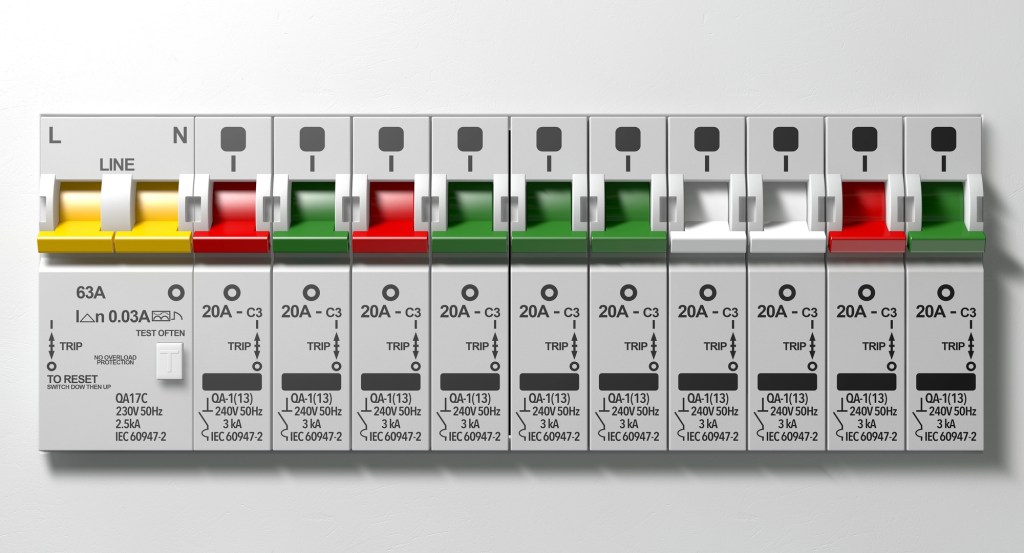Today’s homes depend on a wide array of appliances and devices that require a stable, high-capacity electrical system. However, many older houses were built with panels that simply can’t handle the demands of modern living. Recognizing the signs your home needs electrical panel upgrade is crucial before installing high-power additions like HVAC units, tankless water heaters, or electric vehicle chargers.
Why Panel Capacity Matters

Electrical panels distribute power across all your home’s circuits. In homes built before the 1990s, most panels were rated for 60 to 100 amps — a far cry from the 150- to 200-amp standard needed today. Plugging in modern appliances without upgrading the panel can cause serious safety risks and system inefficiencies.
What Happens When a Panel is Overloaded?
When the panel can’t keep up, circuits trip, fuses blow, or worse — heat builds up inside the panel, leading to melted wires or even fire. These failures often occur when multiple high-demand appliances run at once, such as a dryer, oven, and air conditioning unit.
Even less energy-intensive appliances like microwaves and hairdryers can compound the issue when combined with older infrastructure. Over time, this constant strain accelerates wear on the panel, weakening its ability to safely manage the load.
Key Signs You Need an Upgrade

Adding new appliances without addressing these warning signs could lead to major issues:
1. Frequent Breaker Trips
This is the most common red flag. If your breakers trip during simultaneous appliance use, your system is overextended. This behavior signals that your current panel lacks the capacity for additional devices.
2. Lights Flicker or Dim When Devices Start
Power dips when large appliances activate indicate load instability. Your panel may not be distributing power effectively. This is particularly noticeable in homes that rely on centralized HVAC systems or well pumps.
3. Warm Outlets or Panel Face
Excessive heat is a danger sign. It can mean poor connections or overloaded circuits. In some cases, the plastic around outlets may even become discolored — an early warning that the system is under significant stress.
4. Limited Circuit Availability
Running out of breaker slots means you can’t safely add more circuits to support new devices or rooms. This limitation forces homeowners to daisy-chain power strips and extension cords, which introduces fire hazards.
5. Original Panel from the Home’s Construction
If your home is more than 25 years old and still has the original panel, an upgrade is overdue — even if it seems functional. Electrical codes have evolved, and older panels are not built to handle today’s sustained loads.
Appliance Load and Power Demand
High-powered appliances like double ovens, hot tubs, HVAC systems, and EV chargers all draw significant amperage. Adding even one of these to an outdated system can trigger breaker panel overload, leading to appliance malfunctions or hazardous conditions.
According to the U.S. Energy Information Administration, the average American household uses nearly 11,000 kWh of electricity annually. That number continues to climb as families add energy-hungry conveniences, making panel upgrades increasingly necessary.
Smart Tech and Continuous Power Draw
Homes now feature dozens of always-on devices, from routers and smart speakers to security systems and media servers. This constant draw adds a background load that older systems were never built to accommodate.
Add to that seasonal spikes from space heaters or cooling systems, and an outdated panel can quickly become overwhelmed. Smart appliances are also more sensitive to power irregularities, making reliable voltage regulation crucial.
Risks of Delaying an Upgrade

Ignoring the signs your home needs electrical panel upgrade doesn’t just lead to inconvenience. It can result in expensive repairs, failed inspections, and fire hazards. Insurance companies may even deny coverage for claims if your panel is outdated or improperly maintained.
Fire departments across the country report numerous residential incidents linked to electrical faults, many of which stem from old or insufficient panels. In worst-case scenarios, this could mean thousands in damages, displacement, or injury.
Tradeoffs: Temporary Fixes vs. Long-Term Solutions
While homeowners sometimes attempt workarounds, they often lead to more problems:
- Subpanels: Can provide extra circuits but don’t increase total system capacity.
- Surge Protectors: Defend against spikes but do nothing to improve overall load support.
- Skipping Permits: Some opt to upgrade appliances without electrical permits, exposing themselves to code violations and insurance risk.
Taking shortcuts may reduce upfront costs, but they don’t solve the systemic issue of low amperage and outdated components. In the long run, retrofitting the entire system is more efficient and safer than patchwork fixes.
Benefits of a Proper Electrical Panel Upgrade

A full upgrade supports both safety and flexibility:
- Add appliances and smart tech without system failure
- Improve home resale value
- Comply with National Electrical Code (NEC) standards
- Reduce fire risks and insurance complications
- Prepare for future enhancements like solar panels and EV charging stations
Modern panels also come with improved safety features, including arc fault circuit interrupters (AFCIs) and ground fault circuit interrupters (GFCIs), which add further protection against shorts and shocks.
You can also learn more about avoiding breaker trips and system overloads through this Fuller HVAC guide on panel upgrades.
Resources and Industry Standards
For load calculation methods and national safety practices, explore resources such as:
Conclusion
Before installing new appliances, it’s essential to evaluate your home’s electrical panel. Breaker trips, flickering lights, and power limitations are all signs your home needs electrical panel upgrade – and delaying action can lead to overloads, damaged devices, or worse.
Upgrading your electrical panel isn’t just about capacity; it’s about peace of mind. A modern system enhances safety, efficiency, and compatibility with future technology. Make the smart move today and keep your home’s energy system safe, efficient, and ready for the future.
Related
<!–
–>

